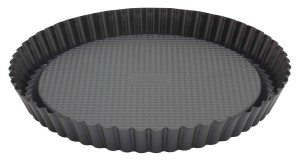 There is an update available for people running Slackware-current. No, not Pat’s updates, although he is quite busy lately too, and I am glad of that. Today, there is a fresh push of packages into my ‘ktown‘ repository: following on the announcement of KDE SC 4.13.1!
There is an update available for people running Slackware-current. No, not Pat’s updates, although he is quite busy lately too, and I am glad of that. Today, there is a fresh push of packages into my ‘ktown‘ repository: following on the announcement of KDE SC 4.13.1!
I had added three new “dependency” packages for KDE 4.13 (xapian-core, qt-gstreamer and eigen3), and now for 4.13.1 I have refreshed one of the other ‘dependencies’ to match the version of the same package in the KDE 4.12.5 set (for Slackware 14.1). LibRaw got updated to the latest version. I am seriously pondering the update of libssh when KDE 4.13.2 becomes available in four weeks, so that the “sfp” kioslave will be built again (the libssh in Slackware is too old). In fact, the libssh sources are already in the “source/deps” directory but I have not used them for now.
As already stated, I built these new KDE packages on Slackware-current. I have not tested them on Slackware 14.1 and will not guarantee that they are even useable on Slackware 14.1. Now that Slackware-current development seems to have picked up a serious pace, it will of course bring you fun and excitement to switch to the development version and join in the bug hunt 🙂
What’s new in KDE 4.13.1 ?
In KDE 4.13, the semantic search program Nepomuk has been replaced by Baloo, which performs better and avoids the data duplication currently seen in KDE (copies of the same data, think of emails, get replicated between nepomuk, akonadi and virtuoso leading to large homedirectory storage needs). The best news for everyone who complained about Baloo, is that it is now possible to disable desktop search using a checkbox in the System Settings… the developer originally thought that nobody would want to not use his software… a bit naïve considering the upheavals caused by the semantic search feature in KDE in earlier days. I will leave the nepomuk package in the distribution as long as the developers will ship its sources along with the rest of the Software Compilation. I expect that that means, all remaining iterations of KDE 4.13. You can read more about what’s new in my previous blog post about KDE 4.13.
There were some more updates: I have added the same KDEvelop packages as were already added to the KDE 4.12.5 package set. I have updated oxygen-gtk2 to 1.4.5 and libkscreen to 1.0.4, both these releases fix crashes in applications.
How to upgrade to KDE 4.13.1 ?
You will find all the installation/upgrade instructions that you need in the accompanying README file. That README also contains basic information for KDE recompilation using the provided SlackBuild script.
You are strongly advised to read and follow these installation/upgrade instructions!
Where to find packages for KDE 4.13 ?
Download locations are listed below (you will find the sources in ./source/4.13.1/ and packages in /current/4.13.1/ subdirectories). Using a mirror is preferred because you get more bandwidth from a mirror and it’s friendlier to the owners of the master server!
Have fun! Eric



Recent comments